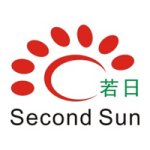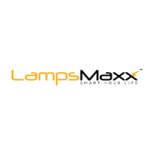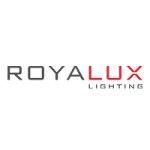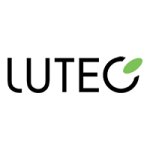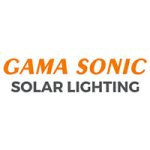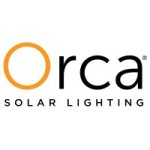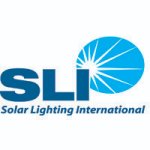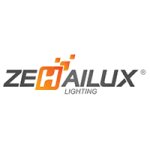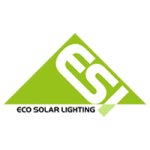Table of Contents Hide
- 1 Harnessing the power of the sun
- 2 Embrace a world of advantages
- 3 LED technology: the powerhouse behind sustainable solar lighting
- 4 The backbone of continuous illumination in solar-powered lighting
- 5 System configuration
- 6 Solar panels
- 7 Rechargeable battery
- 8 LED light engine
- 9 Solar charge controller
-
10
Types of outdoor solar lights
- 10.1 Solar path lights
- 10.2 Solar garden lights
- 10.3 Solar spotlights
- 10.4 Solar floodlights
- 10.5 Solar wall lights
- 10.6 Solar bollard lights
- 10.7 Solar post lights
- 10.8 In-ground solar lights
- 10.9 Solar deck lights
- 10.10 Solar string lights
- 10.11 Solar security lights

Harnessing the power of the sun
Outdoor solar lights are an eco-friendly and energy-efficient lighting solution designed for outdoor applications. These lights harness energy from the sun, a renewable and sustainable source of power. The photovoltaic (PV) cells in solar panels convert sunlight into electricity, which is stored in rechargeable batteries for use during the night. This eliminates the need for traditional energy sources like grid electricity or batteries that may rely on non-renewable resources. Their reliance on renewable energy, low ongoing costs, environmental friendliness, and versatility makes them an attractive option for those seeking efficient and eco-conscious outdoor lighting solutions.Embrace a world of advantages
Solar-powered lighting systems have a transformative impact on outdoor lighting by introducing sustainable, cost-effective, and versatile solutions. Solar-powered lighting relies on the sun as a renewable energy source. This sustainable approach reduces dependence on non-renewable energy and contributes to a more environmentally friendly and eco-conscious outdoor lighting solution. Solar lights operate independently of the electrical grid. This energy independence is particularly valuable in remote or off-grid locations where access to traditional power sources may be limited or costly to establish. Solar lights generally have lower operating and maintenance costs. They don't require extensive wiring, and their components often have long lifespans. The minimal maintenance needs, such as occasional cleaning of solar panels, contribute to overall cost-effectiveness. Installing solar lights is often simpler and quicker compared to traditional wired lighting systems. Solar lights don't require trenching for wiring, making them a practical solution for areas where installing conventional lighting infrastructure is difficult or costly. Solar lights come in various types and designs, suitable for diverse outdoor applications. They can be easily scaled to meet specific lighting needs, whether for residential gardens, commercial parking lots, pathways, or public spaces.LED technology: the powerhouse behind sustainable solar lighting
LED technology enhances the viability of solar lighting by addressing key factors such as energy efficiency, low power consumption, long lifespan, instantaneous lighting, and adaptability to solar power variability. LED lights are highly energy-efficient, converting a significant portion of the electricity they use into visible light. This efficiency is crucial in a solar-powered context where the available energy from solar panels might be limited. LEDs have a longer lifespan compared to traditional light sources, reducing the frequency of replacements. This is particularly advantageous in solar-powered systems, as maintenance can be challenging in remote or off-grid locations. LED lights can be easily dimmed or brightened, allowing for flexibility in adjusting to variations in solar power availability. This adaptability ensures consistent performance even in changing weather conditions. These characteristics collectively contribute to the effectiveness and sustainability of solar-powered lighting systems in various applications. The combination of solar panels and LED technology creates a sustainable and effective solution for various lighting applications, particularly in areas with limited access to traditional power sources.The backbone of continuous illumination in solar-powered lighting
Ongoing advancements in solar technology, such as more efficient solar panels and energy storage solutions, enhance the performance and reliability of solar-powered lighting systems, making them increasingly viable and effective. More efficient solar panels can capture and convert a greater amount of sunlight, increasing the overall effectiveness of solar-powered systems. This is crucial for solar-powered lighting systems, as it allows them to generate more power with the same amount of sunlight, making them more effective. Efficient energy storage is essential for solar-powered lighting systems, as it enables them to store energy during periods of sunlight and use it when sunlight is not available, ensuring a continuous and reliable power supply. As a result of these technological improvements, solar-powered lighting systems are becoming more feasible and practical as alternatives to traditional grid-powered lighting. The advancements contribute to their effectiveness, making them increasingly reliable for various applications.System configuration
A solar LED light incorporates a solar panel, rechargeable battery, light engine, and solar charge controller to harness solar energy and convert it into light. The solar panel is a fundamental component usually positioned on the top of the light fixture. Housed within the light fixture, the rechargeable battery stores the solar-generated energy for later use. This component ensures a continuous and reliable power supply for the LED lights during periods of low or no sunlight, such as nighttime. The LED light engine of a solar outdoor light encompasses the LED array, optical components, thermal management system, LED driver, and control circuitry. The solar charge controller is a crucial component of a solar outdoor light, serving as a vital intermediary between the solar panel, rechargeable battery, and the light engine. By seamlessly integrating these components, an outdoor solar LED light offers a self-sustaining and environmentally conscious lighting solution for outdoor spaces, contributing to reduced energy consumption and minimizing the environmental impact associated with conventional lighting technologies. Outdoor solar lights are purposefully crafted to withstand outdoor conditions, including exposure to weather elements like rain and sunlight. This makes them suitable for illuminating outdoor spaces such as gardens, pathways, patios, and more.
Solar panels
Various types of solar panels are employed in outdoor solar lights, offering different characteristics to suit the specific needs and requirements of diverse applications. The choice of solar panel type depends on factors such as efficiency, cost, available space, and the intended use of the solar lights. Monocrystalline panels are often chosen for their high efficiency in converting sunlight to electricity and space-efficient design. Polycrystalline solar panels are less expensive to produce than monocrystalline panels, although they are less efficient. Amorphous or thin-film solar panels use non-crystalline silicon or other materials like cadmium telluride or copper indium gallium selenide (CIGS). They are known for their flexibility and versatility in various applications. These solar panels are preferred for applications with unique design considerations. Multijunction solar panels use multiple layers of semiconductor materials to capture a broader spectrum of sunlight. They are often used in more advanced and specialized applications. CIGS solar panels use a thin layer of semiconductor material that includes copper, indium, gallium, and selenium. They are known for their efficiency and potential for flexible applications.Rechargeable battery
Rechargeable batteries used in outdoor solar lights serve as energy reservoirs, storing the electricity generated by solar panels during the day and releasing it during the night, ensuring a continuous and reliable source of illumination. This function enhances the autonomy, efficiency, and environmental sustainability of solar-powered outdoor lighting.Choosing the right rechargeable battery for outdoor solar lights involves considering factors such as cost, energy density, cycle life, environmental impact, and the specific requirements of the lighting system. Rechargeable batteries with a longer cycle life are preferred for outdoor solar lights, as they can endure frequent charging and discharging. Higher energy density batteries generally allow for more extended periods of illumination during the night. The design and compatibility of the battery with the solar lighting system are essential. Factors such as size, voltage, and charging characteristics need to align with the specific requirements of the solar light. Different battery chemistries have varying temperature sensitivities. It's essential to consider the climate of the installation location, as extreme temperatures can affect battery performance.
Lithium-Ion (Li-Ion) batteries are known for their high energy density, lightweight design, and long cycle life. They are becoming more popular in high-performance outdoor solar lights. Lithium Iron Phosphate (LiFePO4) batteries are known for their safety, stability, and long cycle life. They are a type of lithium-ion battery but with specific characteristics that make them suitable for certain solar applications. Nickel-Metal Hydride (NiMH) batteries. offer a good balance of cost, performance, and environmental friendliness. They have a moderate energy density and can withstand temperature variations. Lead-acid batteries are reliable and relatively low-cost. They batteries, however, are bulkier, heavier, and have a lower energy density compared to lithium-based batteries. Regular maintenance is also required.
LED light engine
The LED light engine is a critical component that ensures the efficiency, reliability, and functionality of outdoor solar lights. Its integration with solar panels, batteries, and control mechanisms makes it a key player in harnessing renewable energy for outdoor lighting applications. Multiple LEDs are usually arranged in an array within the light engine. An alternative form of LED light source is an COB LED module. The LED light engine typically includes a heat sink or other heat-dissipating mechanisms to dissipate the heat generated during LED operation. Outdoor solar lights often incorporate lenses or reflectors to control the direction and distribution of light. This ensures that the light is directed where it is needed and minimizes light spillage. The LED driver regulates the electrical current supplied to the LEDs. It ensures a consistent and controlled flow of electricity, preventing fluctuations that could affect the brightness and lifespan of the LEDs. The driver also adapts the power supply to the specific requirements of the LEDs. Outdoor solar lights may include control circuitry within the LED light engine. This circuitry may enable features such as dimming, color temperature adjustment, or programmable lighting modes. It allows for greater flexibility in adjusting the light output based on environmental conditions or user preferences.Solar charge controller
A solar charge controller regulates and manage the flow of electrical energy within the solar lighting system. It receives the direct current (DC) electrical output generated by the solar panel. The solar panel captures sunlight and converts it into electrical energy. The controller prevents overcharging of the battery by regulating the amount of electrical energy that flows from the solar panel to the battery. Overcharging can lead to damage and reduced battery lifespan. It optimizes the charging process by ensuring that the battery receives the right amount of energy to reach its maximum charge without overcharging. This is particularly important for the longevity of the battery. The controller also prevents deep discharge of the battery, which occurs when the battery is drained to extremely low levels. The solar charge controller manages the distribution of power to the LEDs. It ensures that the LEDs receive a steady and regulated supply of energy for illumination during periods of darkness. Some solar charge controllers are equipped with a photocell that detects ambient light levels. This sensor triggers the LED controller to activate when natural light decreases, such as at dusk, and to deactivate when sufficient daylight is detected, enhancing energy conservation. In certain models, an optional motion sensor is integrated to activate the LED lights in response to detected movement. This feature enhances energy efficiency by providing illumination only when necessary.The two main types of solar charge controllers commonly used in outdoor solar lights are PWM (Pulse Width Modulation) and MPPT (Maximum Power Point Tracking). PWM charge controllers are one of the older and more traditional types. They regulate the charging of the battery by intermittently interrupting the current flowing from the solar panel to the battery. The interruption occurs in pulses, and the width of these pulses is modulated to control the voltage reaching the battery. MPPT charge controllers are more advanced and sophisticated. They continually adjust the electrical operating point of the solar panel to extract the maximum power available under the current environmental conditions. This is achieved by finding the maximum power point (MPP) of the solar panel, even if the panel voltage is different from the battery voltage. PWM controllers are generally more cost-effective compared to MPPT controllers. They work well in smaller solar power systems with simpler requirements. MPPT controllers are more efficient than PWM controllers, especially in situations where there is a significant difference in voltage between the solar panel and the battery. MPPT controllers can accommodate solar panels with higher voltages, providing flexibility in system design. For larger systems, off-grid installations, or situations with varying environmental conditions, an MPPT controller is often the preferred choice due to its higher efficiency and voltage flexibility.



